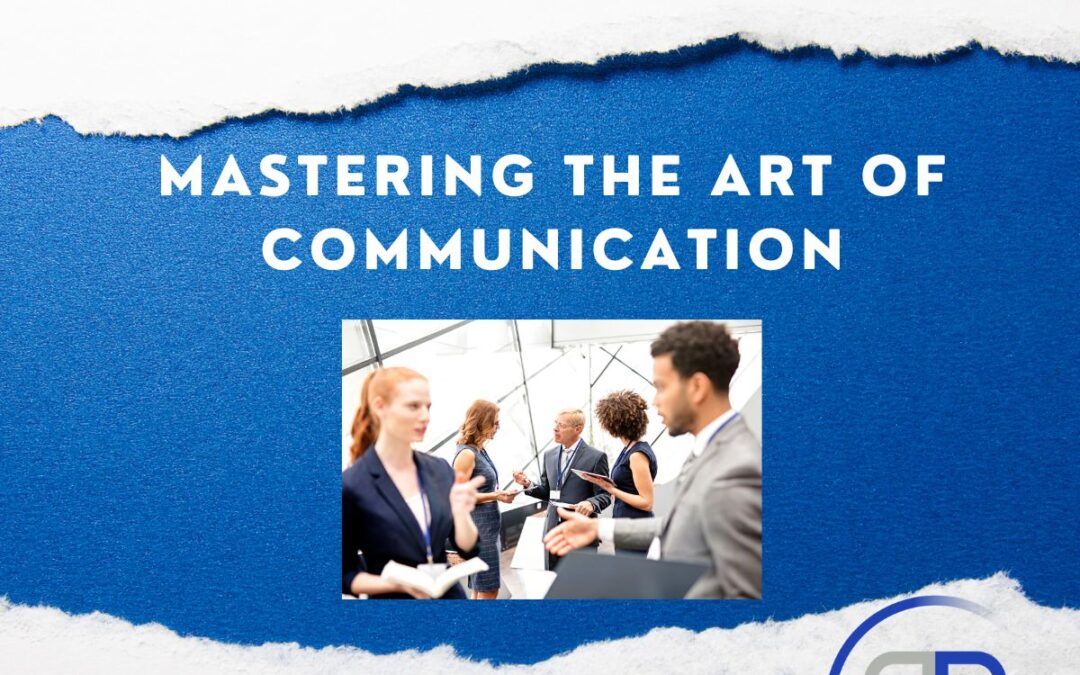In the world of executive leadership and as business owners, effective communication is more than a skill, it is an artform. It’s about conveying ideas, influencing change, and inspiring teams. However, even the most seasoned leaders face unique challenges in their quest to communicate effectively.
According to an article titled, Communication in the Workplace Statistics 2023, by Pumble, research showed that “86% of employees and executives cite the lack of effective collaboration and communication as the main causes of workplace failures. On the other hand, teams who communicate effectively may increase their productivity by as much as 25%.”[1]
Understanding these challenges and mastering the art of communication is crucial for leadership success, no matter what industry you are in. Listed below are the top 5 challenges executives face when communicating, and why overcoming them matters.
Challenge 1: Bridging the Generational Divide
Today’s workforce is more generationally diverse than ever, with Baby Boomers, Gen X, Millennials, and Gen Z all sharing the workspace. Each generation comes with its own set of values, communication styles, and expectations. Executives must learn to navigate these differences to foster a unified and productive environment. This requires flexibility, an understanding of varied communication preferences, and the ability to adapt messages accordingly.
Why It Matters:
Effective cross-generational communication enhances team collaboration and leverages the strengths of each age group, leading to a more dynamic, innovative, and competitive organization. This results in a more positive and empowering, overall work culture.
Challenge 2: Navigating Digital Communication Platforms
In today’s digital era, the modes of communication have significantly evolved. Executives face the challenge of selecting appropriate platforms for their messaging, be it through emails, social media, or virtual meetings. Each of these platforms carries its unique subtleties and demands a tailored approach to effectively convey the intended message. With the rise of remote work, traditional face-to-face interactions have become less frequent. Consequently, when conveying difficult information, leaders must be particularly mindful of how their message may be perceived in the absence of direct, in-person communication.
Why It Matters:
Clear and effective digital communication helps in building trust, ensuring that all team members, regardless of their location, feel included and valued. It also plays a critical role in preventing misunderstandings that can lead to conflicts or project delays. Mastering digital communication is key to leading a resilient, connected, and efficient team.
Challenge 3: Balancing Transparency with Discretion
In organizations where transparency is increasingly valued, it’s crucial for executives to strike a delicate balance between being open and exercising discretion. This balancing act is not just about deciding what information to share but also involves gauging the appropriate amount and the optimal timing for sharing it. Effective communication in this regard means being honest and transparent to foster trust, yet also discerning and prudent to protect the interests of the organization. Executives need to navigate this with a keen sense of judgment to maintain their credibility and the trust of those they lead, ensuring that their approach to transparency boosts rather than undermines their leadership.
Why It Matters:
Successfully navigating the balance between transparency and discretion is a cornerstone of effective leadership. This approach not only strengthens the team’s cohesion but also reinforces the leader’s credibility in the eyes of their colleagues and external partners. Moreover, it helps in creating an environment where employees feel informed, leading to higher engagement and morale. In the broader context, this balance contributes to the overall integrity and reputation of the organization, making it a crucial aspect of strategic leadership.
Challenge 4: Managing Crisis Communication
Crisis situations are true tests of leadership, challenging even the most seasoned executives to step up their communication game. In these high-pressure moments, the ability to deliver clear, concise, and reassuring messages becomes paramount. It’s not just about relaying critical information; it’s about demonstrating control, instilling calm, and providing direction in the face of uncertainty. Effective crisis communication requires a blend of empathy, transparency, and decisiveness. Leaders must quickly assess the situation, determine the key messages, and communicate them in a way that resonates with and comforts their audience. This skill is crucial in maintaining trust, minimizing confusion, and guiding the organization through turbulent times with confidence and clarity.
Why It Matters:
Effective crisis communication is vital in managing both internal and external responses. Internally, it keeps employees informed and cohesive, while externally, it shapes public perception and maintains customer trust. This strategic communication is key to mitigating damage, upholding stakeholder confidence, and ensuring organizational reputation and continuity.
Challenge 5: Personalizing Communication
Leaders often must communicate with a diverse range of stakeholders, from employees and customers, to investors and the public. Personalizing communication to resonate with each group, while maintaining a consistent message, is a significant challenge. Each group has its own communication preferences and expectations. The challenge lies in maintaining a delicate equilibrium where every discussion appears tailored and meaningful, while guaranteeing the coherence and consistency of the overarching message. Understanding these diverse communication needs and adapting the style accordingly is essential for effective and impactful leadership.
Why It Matters:
Personalizing communication is vital because it demonstrates respect for each stakeholder’s unique perspective, fostering stronger relationships and trust. When messages resonate personally with different groups, it enhances engagement and feedback, making it more likely that they will understand and embrace the message. This adaptability in communication style can lead to better collaboration, and improved decision-making.
Mastering executive communication is not just about overcoming these challenges; it’s about transforming them into opportunities to lead more effectively. It requires continuous learning, adaptability, and the willingness to evolve. By addressing these challenges head-on, leaders can significantly enhance their influence and impact, and ultimately, steering their team towards greater success.
#ExecutiveLeadership #EffectiveCommunication #LeadershipChallenges #ManagementSkills #StrategicLeadership
[1] Pumble. (2023). Communication in the Workplace Statistics 2023. Retrieved on January 29th, 2024, from: https://pumble.com/learn/

